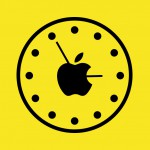The era of wearable device technology has arrived. In fact, recent studies show that approximately 30 percent of United States smartphone holders already own wearables. As technology continues to advance the development of these personal devices, there will certainly be an increase in more convenient payment options for consumers—and smart retailers are catching on.
 Beyond Smartphones: Wearable Tech Offers Payment Convenience
Beyond Smartphones: Wearable Tech Offers Payment Convenience
Smartphones already offer a variety of applications capable of swiping cards, processing personal information and recording product metrics. But wearable tech may go even further when it comes to making the payment process more convenient for consumers.
While the impending Apple Watch has invoked much of the interest behind smartwatches, other high-tech wearable gadgets are being developed. For example, Disney already offers guests the ability to pay for items via MagicBand, a colorful bracelet that directly links to a personal credit or debit card. The so-called “Power Suit” allows its wearer to make payments via their clothing sleeve, through use of NFC technology. And many big-league fiscal providers, like Visa, have considered investing in creation of expansive technology to take these processes even further.
This small technological revolution has the potential to redefine the way in which consumers pay for goods and services. And as we anticipate where technology will take us in the near future, all eyes are on the coming Apple Watch and its Apple Pay capabilities.
 Time Ticks Down to the Launch of Apple Watch
Time Ticks Down to the Launch of Apple Watch
In recent months, the Apple Watch has single-handedly piqued smartwatch (and wearable tech) interest more so than previous rivals, like the Pebble or Samsung’s Galaxy, ever did.
Although it’s not set to arrive until April 24, the industry buzz is already undeniable. A two-part survey featured on Computerworld reflected a record 8,266 consumers placing higher interest in the Apple Watch than on the “revolutionary” Google Glass.
Tech corporations and industry gurus are taking note, and merchant services may receive a significant boost from the Apple Watch’s high flexibility towards sales processing—especially when it comes to the wearer’s ability to conveniently and quickly use Apple Pay. By offering such flexibility, smartwatches have definitely shifted from mundane “power person” ideology to more practical, professional solutions.
The Optimized Consumer and the Future of Payment Processing
Faster payment processing is always the endgame for retailers, so the wearable trend is a logical next step in attempting to near that goal. When the consumer is waiting in line for a shorter amount time, more payments are being processed, and at quicker rates. At first glance, this may appear as a minimal side effect, but the overall impact of highly optimized sales processing is astounding.
So where will the future take wearable technology and merchant sales? Likely, security will be a conservative pit-stop, as fiscal dealings are historically shaky when new technology arrives. However, if wearable tech is proven to be secure—and, if the industry begins thriving upon the shift towards speed processing—more technology may follow, and it’ll further redefine the industry.
For now, however, the wearable tech trend is still in its relative infancy. We’ll be watching to see where it takes us.
Stay updated on payment processing trends by following Abtek on Twitter and Facebook. Sign up to receive our newsletter, too.
Share and Enjoy





















 almost a month–28 days, to be exact–to make the most of your holiday shoppers?
almost a month–28 days, to be exact–to make the most of your holiday shoppers?
 holidays, the risk of data breaches is especially high. Do you have
holidays, the risk of data breaches is especially high. Do you have 